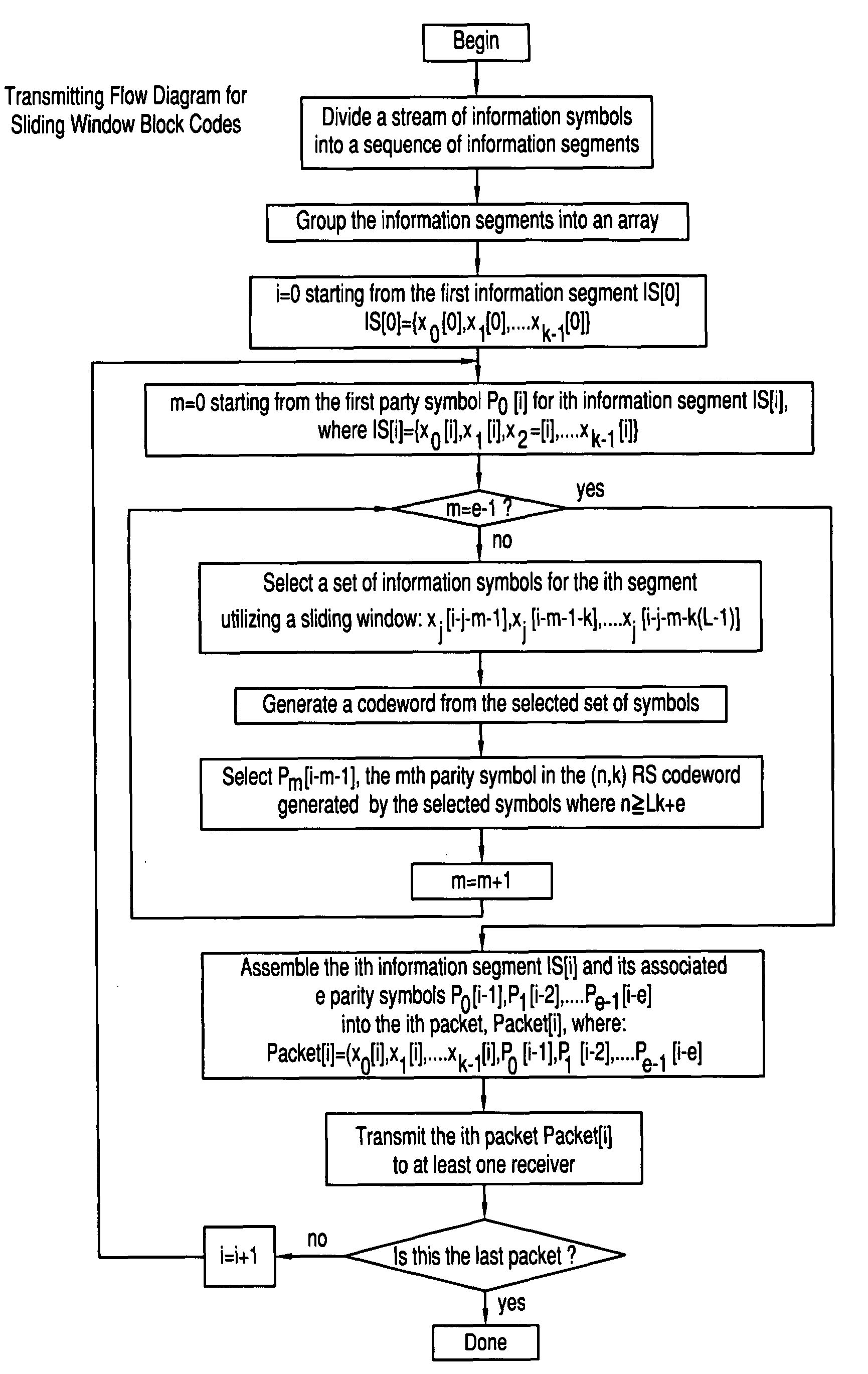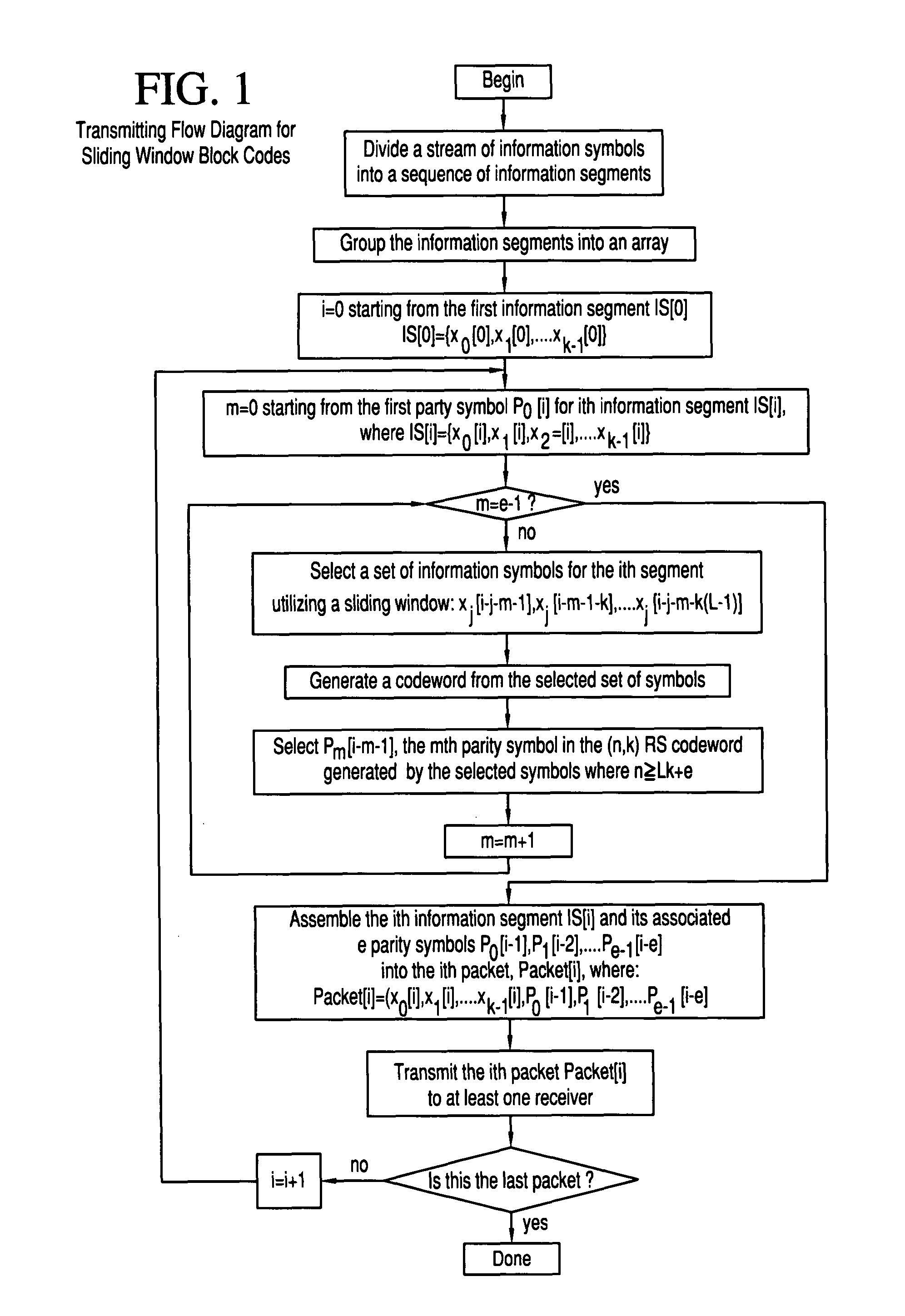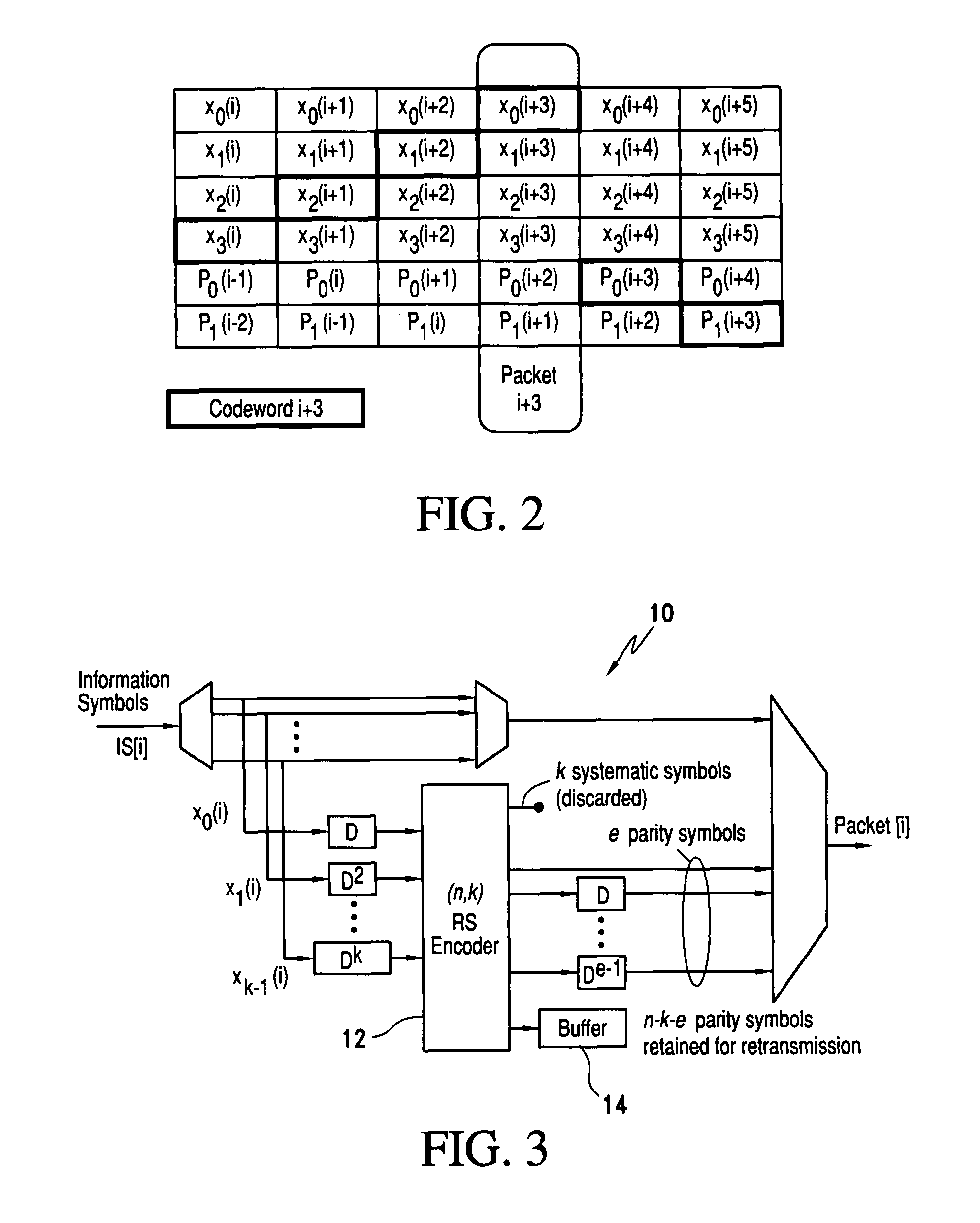Sliding window block codes for cross-packet coding
a window block and cross-packet technology, applied in the field of network coding techniques, can solve the problems of df decoder, unable to guarantee the recovery of any particular piece of information, and packet source latency, and achieve the effect of reducing transmission overhead and less decoding latency
- Summary
- Abstract
- Description
- Claims
- Application Information
AI Technical Summary
Benefits of technology
Problems solved by technology
Method used
Image
Examples
Embodiment Construction
[0042]Referring now to FIG. 1, a preferred embodiment of a method for communicating information symbols in a digital communications system in accordance with the principles of the present invention is illustrated. First of all, a transmitter divides a stream of information symbols into a sequence of information segments, each of which contains k symbols. The ith information segment is denoted as IS[i], and the k symbols in the ith information segment are denoted as x0[i], x1[i], . . . , xk−1[i], where IS[i]={x0[i], x1[i], . . . , xk−1[i]}
[0043]The transmitter groups the information segments into a 2D array. One of the 2D array indices is the index of the information segment, denoted as i. The other index of the 2D array indices is the index of symbols in the information segment, denoted as j.
[0044]The transmitter generates a set of e parity symbols associated with each information segment, where e is greater than one. The index of e parity symbols is denoted as m. The mth parity sym...
PUM
 Login to View More
Login to View More Abstract
Description
Claims
Application Information
 Login to View More
Login to View More - R&D
- Intellectual Property
- Life Sciences
- Materials
- Tech Scout
- Unparalleled Data Quality
- Higher Quality Content
- 60% Fewer Hallucinations
Browse by: Latest US Patents, China's latest patents, Technical Efficacy Thesaurus, Application Domain, Technology Topic, Popular Technical Reports.
© 2025 PatSnap. All rights reserved.Legal|Privacy policy|Modern Slavery Act Transparency Statement|Sitemap|About US| Contact US: help@patsnap.com



